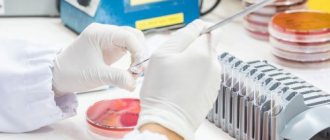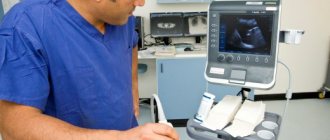Urinary tract infections are widespread among all age groups of the population. Children and women, including pregnant women, are especially often affected by them. The insidiousness of the disease lies in its often hidden course. In the arsenal of modern medicine there are many diagnostic methods that can detect infections of the urinary system. The simplest and most common of them is a general urine test, and the most informative is urine culture. Urine is submitted for sterility not to an ordinary laboratory, but to a special bacteriological laboratory. The test can detect even asymptomatic forms of urinary tract infections.
Reasons and purposes of analysis
Collecting urine for this type of test may be recommended in certain situations:
- the initial sampling produced poor results;
- urination becomes more frequent and severe pain is felt;
- signs of pain appeared in the lumbar region;
- there was a suspicion of a disease of the urinary and reproductive systems;
- the treatment course for inflammatory pathology has ended;
- children aged two to four months undergo routine examination;
- there is a need to identify the responsiveness of microorganisms to certain drugs;
- for the male half, this type of test is prescribed to detect hidden diseases that occur without pronounced symptoms;
- Pregnant women receive biological fluid for testing at the time of registration.
Indications for bacteriological examination
In a healthy person, urine is sterile. Bacteria enter it directly from the urinary tract or from the outside due to errors in collecting material for research. Typically, the manifest forms of urinary infections are easily identified by a general urine test. But sometimes it is necessary to donate urine for bacterial culture:
- Suspicion of an infection of the bladder, kidneys, urinary tract (cystitis, pyelonephritis or unspecified localization), the symptoms of which are: fever, painful and frequent urination, pain in the lower back or abdomen, chills, vomiting, diarrhea, discoloration and turbidity of urine.
- A large number of bacteria or leukocytes in a general urine test.
- Monitoring the treatment of urinary tract infection (7th day of antibiotic therapy).
- To detect relapse after acute pyelonephritis (convalescence period).
- To detect exacerbation of chronic pyelonephritis.
- Preventive examination in pregnant women upon registration in the first trimester and shortly before birth (at 36 weeks).
- Preventive examination in infants 3 months.
A referral for a urine test for sterility is issued by a general practitioner, pediatrician, family doctor, nephrologist, urologist, obstetrician-gynecologist.
How to test urine for sterility?
This method of examining urine is considered the most complex and time-consuming. To clarify the necessary results, the patient should follow a certain algorithm of actions:
- Use a clean container for donating urine. Every pharmacy has the opportunity to purchase special containers.
- Morning urine is collected for laboratory analysis. It is in this dose that the maximum number of bacteria is concentrated, and the test indicators will be the most reliable.
- The analysis is carried out on an empty stomach. You should stop eating about four hours before and do not visit the toilet during the same time interval.
- Hygiene requirements must be observed. The test results will be distorted when the patient does not comply with hygiene rules. The fact is that dangerous microorganisms located on the genitals can get into urine. You should wash with warm water, without using soap or gel compositions, so that their antibactericidal additives cannot affect the indicators.
- The sample collection must be performed correctly. Of immediate interest is the average dose, which should be collected in a special container.
- After releasing urine, the container must be sent immediately to the laboratory so that the passage of time cannot influence the results.
- It is not recommended to take antibiotics two weeks before urine collection.
- At least one day before donating urine, you must stop taking diuretic medications.
- On the eve of urine collection, it is worth eliminating physical stress on the body.
How much urine is needed for analysis can be found out from our material.
Conducting research
To exclude a distorted result, the patient should study the diagnostic technique and understand how to correctly collect biomaterial for analysis. It is also worth noting that urine collection in children has its own characteristics.
Methodology
The seeding itself is a multi-stage study. To obtain reliable results, laboratory technicians perform the following actions:
- isolation of microorganisms from urine, which are subsequently sent to a special incubator for their reproduction;
- separation of bacteria, since their growth is possible only in isolated conditions;
- determination of the sensitivity of colonies to antibiotics.
Experts record the obtained indicators in a table. It is on their basis that the attending physician makes a diagnosis and prescribes appropriate therapy.
Preparation rules
In order for the study to show the correct values, you must adhere to the following recommendations:
- Urine should be collected for sterility exclusively in a clean container, which can be purchased in advance at any pharmacy.
- Before urinating, you need to wash your genitals to prevent foreign microorganisms from entering the analysis. At the same time, experts do not recommend using soap, since its particles can remain on human skin and thereby provoke false culture results.
- During the procedure, women should use a tampon to prevent vaginal secretions from getting into the jar.
- The first portion of urine should be poured into the toilet, and the rest should be collected in a container.
- The container must be tightly closed and delivered to a medical facility within two hours.
Advice! If for some reason it is not possible to take the biomaterial to the laboratory immediately, you can put it in the refrigerator. The duration of such storage should not exceed five hours.
When not to get tested
It is not worth conducting a bacteriological study if:
- the patient has recently taken antibacterial drugs;
- the patient takes diuretics;
- The content of vitamin C in the human body currently exceeds the norm.
It is also necessary to refuse the study during menstruation in women. Pregnant women should be diagnosed at 36 weeks.
Features of urine collection in children
Quite often, the results of bacterial culture in children turn out to be unreliable, since the rules for collecting urine were violated. That is why parents should pay special attention to the procedure.
For analysis, you need to collect morning urine taken after waking up. Before manipulation, you should pay attention to the hygiene of the child’s genital organs. To prevent foreign microorganisms from entering the container, you can purchase a special urinal bag at the pharmacy. As with adults, the baby's first urine should be thrown away. If you manage to take the entire portion of urine at once, you should definitely notify the doctor about this, since the analysis parameters may be distorted. It is strictly forbidden to use biomaterial taken from a potty, diapers or nappies.
Interpretation of test results
Using the test, you can identify the number of pathogenic bacteria. The selected biological fluid is placed in a special nutrient medium and placed in an incubator for twenty-four hours. Thus, a new colony of microorganisms appears, which are then sown in Petri dishes. After an additional day, the hatched samples are divided into species, their number is again increased, and their degree of vulnerability to the effects of antibiotics is checked.
The main indicator in identifying the presence or absence of inflammatory processes and infections in the body in this research method is the concentration of individuals forming a colony. This refers to the cells of dangerous microorganisms, which after a short period of time can turn into entire colonies.
If an increase in CFU is detected, the sterility test is considered positive, which means that a therapeutic treatment course will need to be prescribed. If bacterial development is not detected, there is no need to worry. In the language of ordinary digital data, it looks something like this:
- norm – the indicator does not exceed 1,000 CFU/ml;
- the disease progresses – from 100,000 CFU/ml;
- it is necessary to retake the analysis - from 1,000 to 100,000.
Culture indicators for healthy women and men
There are small numbers of harmful microorganisms in every person, even if he is absolutely healthy. Some parameters that influence sterility have been identified:
- The color of the urine should be straw-yellow, the liquid itself should be transparent;
- the concentration level is 1,008 – 1,026 g/ml;
- the limit value of protein is not higher than 0.033 mol/l;
- number of red blood cells – from 0 to 1 in the field of view;
- epithelium within visible boundaries – 3 – 5 units;
- urine should be neutral;
- there should be no crystals, glucose or mucus in the urine;
- for male patients, the normal leukocyte count is 0 – 3, and for women – up to 6.
What will be normal during pregnancy?
Urine is submitted for sterility testing not only when pathological abnormalities are suspected, but also by people belonging to risk groups. One of these is the category of women expecting children. If a family has planned to give birth to a baby, they should definitely visit a specialist, get examined, and take all the necessary tests.
It is best to do this about two months before pregnancy begins. In order for it to proceed normally, you will need all the information about the diseases of the expectant mother. It is for this reason that tests are prescribed in advance to try to grow pathogenic flora.
During pregnancy, a woman must be tested at least twice to check the sterility of her urine. The first time sowing is performed at the time of registration, the second procedure is carried out at the thirty-sixth week of the term. This need is due to the fact that in a number of situations, even in the absence of signs of disease that could indicate problems in the organs of the genitourinary system, in this category of women bacteriuria can occur secretly.
If it is not detected in a timely manner and adequate treatment is not started, then serious complications may arise during the formation of the fetus, which can lead to forced termination of pregnancy and even miscarriage.
When the analysis of a pregnant woman reveals unsatisfactory indicators, the patient is awaited a re-examination. If E. coli, Candida fungus, Staphylococcus aureus and other harmful microbes are detected, the doctor will immediately prescribe a course of treatment. A urine test will have to be taken until the sterility indicator returns to normal.
During pregnancy, urine results are as follows:
- yellow or straw color;
- normal protein level – no higher than 0.75 g/l;
- the number of leukocytes is no more than 5 (if this figure is higher, it means that an inflammatory process is developing in the body);
- ketones, bodies and glucose should be absent.
Deviations are turbidity of urine due to an increase in the level of phosphates and excess density above the value of 1,010 - 1,030 g/l. In such a situation, a suspicion of kidney pathology arises.
Culture of a woman’s urine helps to identify the absence of microorganisms of a “negative” nature, the presence of “positive” ones and the probable growth of dangerous parasites.
When bacteria are detected in a woman’s body, the doctor performs a drug sensitivity test on them. The data obtained is entered into a special journal and entered into a form that is included in the patient’s medical record.
What is urine culture?
Bacterial culture of urine, urine for sterility, analysis for bacteriuria, also known as bacteriological examination - this is the same method for studying biomaterial in a laboratory. It consists in placing urine in an artificial nutrient medium and closing it in a thermostat. In such a container, conditions, humidity and temperature favorable for the development and reproduction of bacteria are maintained. After some time, entire colonies of microorganisms appear, which are in a dormant state in the liquid.
As soon as the environment is conducive to reproduction, they wake up and become active. Their number is calculated by specialists who determine the level of bacteriuria and the number of colony-forming units (CFU per 1 ml of liquid). A CFU is counted as one microorganism that has developed in one colony.
In order to identify the pathogen, each colony is subjected to biochemical typing. At this stage, the microbe belongs to a certain category and its sensitivity to a particular active substance in the antibiotic is examined. This involves using disks soaked in medicine and placed next to the colony. If the death of microorganisms is observed around such a disk, it means that the antibiotic is effective in the fight against these pathogenic bacteria. Sensitivity is determined in millimeters according to the diameter of the disk in which the microbes died.
How to get tested during pregnancy?
When collecting urine, a pregnant woman should cover the vaginal opening with a clean napkin during the procedure. In some cases, a sterile disposable catheter is used. This usually happens if the gestation period is significant.
It must be remembered that when preparing for the test, everyday hygiene procedures will not be enough. Additional measures have been developed:
- It is not recommended to use public toilets when taking the test.
- After each visit to the toilet, you must wash yourself using regular soap for children.
- Underwear or sanitary pads should be changed frequently.
- It will be better if the linen is made from natural materials. It is not recommended to use synthetics.
- Washed linen must be carefully ironed with a hot iron.
How to determine the norm in children?
Collecting urine from a child is considered a difficult task. It all depends on the age category of the child.
Features of sampling
It is difficult to collect urine from a baby. To do this, you should use urinals, which can be purchased at pharmacy kiosks. For boys, this device is attached to the penis; for girls, it is fixed above the pubis with the upper edge, and on the anus with the lower edge. In the case of boys, it is possible to wear a diaper, but girls have to be held in their arms until the biological fluid is released.
Indicators and standards
Normal urine values are:
- its absolute transparency, straw tint;
- no proteins, no glucose, no bacteria with salt accumulation should be detected;
- mucus is either absent or present in small quantities. This means that the baby’s genitals were poorly washed;
- epithelium – no higher than 2 units;
- white blood cells – up to six;
- acidity – weak, from 4.5 to 8.0;
- number of cylinders – at least one.
The specific gravity will depend on the age category of the patient:
- up to two years – 1,002 – 1,004 g/l;
- up to five years of age – 1,012 – 1,020 g/l;
- up to twelve years – 1,011 – 1,025 g/l.
A low value of urine density is allowed in case of kidney pathologies, elevated body temperature, during vomiting or diarrhea.
The presence of an alkaline reaction confirms the abundance of vegetables in the diet or the development of inflammation. Glucose is considered a sign of diabetes, casts indicate urethritis or cystitis. Harmful microorganisms or fungi are considered signs of an infectious disease of the baby’s genitourinary system.
How pathogens enter the urinary system
Urine is produced in the kidneys, a pair of organs located at the bottom of the rib cage, to the right and left of the spine, closer to the back. The kidneys filter waste and substances that the body does not need from the blood, producing urine from them, which flows from the kidneys into the bladder through the ureter tubes . There, urine is temporarily stored and leaves the body after emptying the bladder through the urethra.
In most cases, urine is a sterile substance, meaning bacteria and fungi do not live in it. But sometimes microorganisms penetrate the urethra from the skin surrounding the external opening and rise up the urinary tract, causing infection.
It is worth noting that women and girls get UTIs much more often than men and boys due to the structure of the urinary system. A variety of bacteria and fungi can cause UTIs. The most common:
- Eschirichia coli bacteria, which normally live in the gastrointestinal tract and are usually detected in stool tests.
- Proteus.
- Klebsiella.
- Enterococcus.
- Staphylococcus.
- Candida Albicans is a fungus that causes thrush.
Most cases of infection are not serious diseases, occur without complications, and are easy to treat. But if the disease is left to chance, the infection can go further up and enter the kidneys through the ureters. Kidney infection (pyelonephritis) is a much more serious condition that can lead to irreversible kidney damage.
Very rarely, in the most severe cases, urinary tract infections can lead to blood poisoning (sepsis), which is a life-threatening condition.
Patients with any type of kidney disease, diabetics, and people with weakened immune systems are much more likely to experience frequent, recurring, chronic, complicated urinary tract infections. Therefore, they need to visit the doctor frequently for check-ups.










